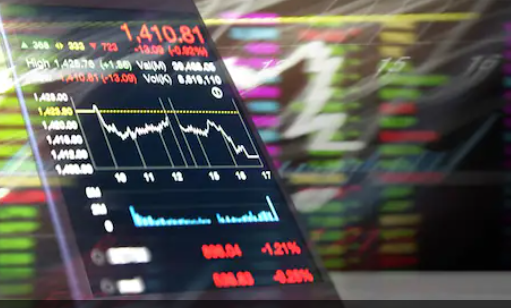The way we buy a commodity, like grains, spices, gold, for our everyday needs, in the share market, the purchase of these commodities is also sold. In the Commodity section of the stock market, its purchase and selling is called commodity trading.
Mumbai. Just as we buy a commodity, such as grains, spices, gold, for our everyday needs, in the share market, the purchase of these commodities is sold. In the Commodity section of the stock market, its purchase and selling is called commodity trading. It is slightly different from trading in the shares of companies ie equity market. Commodity trading is mostly in the future market. The ban on commodity trading was lifted in 2003 after 40 years in India. In general, commodities are classified into four types. Precious Metals – Gold, Silver and Platinum
Base Metal – Copper, Zinc, Nickel, Lead, Teen and Aluminum
Energy – Crude Oil, Natural Gas, ATF, Gasoline Spices – Black Pepper, Coriander, Cardamom, Cumin, Turmeric and Red Chilli. Other – Soya Seed, Mentha Oil, Wheat, Gram
What is different in
commodity trading – there is a fundamental difference between commodity trading and stock market trading. In the stock market, you can buy shares and sell them even after many years, but in the commodity market, trading takes place in two or three near months. Therefore, it is important to follow a certain period in buying or selling deals. It is similar to equity future trading.
What is the future contract?
It is such a deal between two parties to buy and sell that is exchanged in the future debt at today’s price. Commodity trades with national level online monitoring and surveillance mechanisms. In MCX and NCDX, commodity future contracts are purchased on a month, two month, and three months basis on an Exupyry cycle. Investment in Commodity is beneficial for portfolio diversification –
According to experts, to diversify the portfolio, the investor should invest in equity as well as commodity. This can be taken advantage of fluctuations in prices. However, retail and small investors should be particularly careful in investing in commodities. Market volatility and little information can overwhelm the entire money. It is important for the investors to know the demand cycle and what factors affect the commodity market.
benefit from commodity trading –
The Rs 25 lakh crore annual commodity market in India is growing rapidly. It is mainly a leverage market. Meaning small and medium investors can also do commodity trading through small amounts of margin money. Hedging – The risk of commodity price fluctuations decreases for farmers, manufacturers and real users. Variety in Portfolios – Commodity is evolving as a new asset class. It effectively diversifies portpolises. Trading Opportunity
The daily turnover of the commodity is around 22,000 – 25,000 crores, which provides a better trading opportunity. High leverage – In this very small money you can make big deals with the help of margin money. Understanding ease in understanding it because of fundamental commodity Basic Nature and simple economic is even easier What is the Indian Commodity Exchange roll –
The Indian Commodity Exchange is the institution that provides a platform for trading in commodity futures. For example, the stock market provides space for trading in equities. There are currently 95 commodities available for future trading, which are within the guidelines and framework issued by the Regulator Forward Market Commission (FMC). There are 3 national and 22 regional exchanges in India right now. What is MCX (Multi Commodity Exchange) –
Commodity trading in the commodity market facilitated by MCX (Multi Commodity Exchange) is often referred to as MCX trading. Just as BSE and NSE provide a platform for trading in stocks, MCX provides a platform for trading in commodities. Major trading in it is in metals and energy. The daily exchange value in this is 17,000-20,000 crores. NCDX – It came into existence in December 2003. There is mainly agri trading in it. Daily exchange value of about 2000 – 3000 crores.


